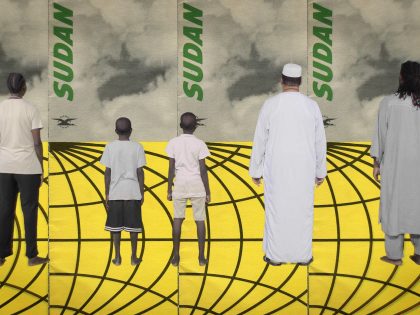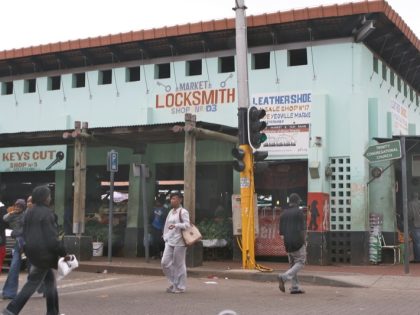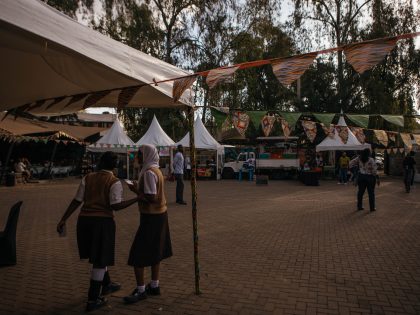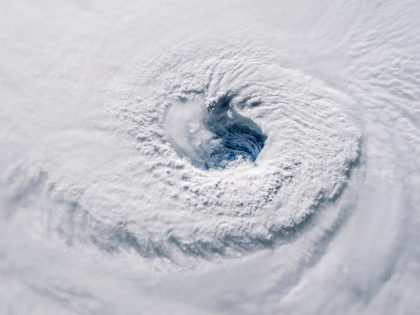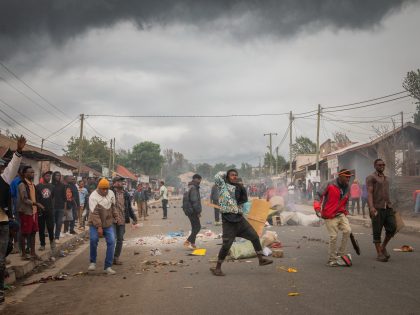Three separate films
'Virunga' is an important film, even if it lacks perspectives from local stakeholders.

'Virunga' Film Press Photo
The documentary film Virunga (2014), about a national park in the Democratic Republic of Congo, recently made headlines for its Oscar nomination. Mostly for the film’s prominent backers. The actor Leonardo DiCaprio, who might just replace Ben Affleck as Congress’ designated Congo expert and starred in his own version of Heart of Darkness, heavily supported the documentary.
As for the film — directed by Orlando von Einsiedel — it revolves around the Virunga National Park, situated in the province of North Kivu, in the country’s east. The park, formerly known as Albert National Park, is a UNESCO World Heritage Site and comprises 7,800 square kilometers, and has a breathtaking natural landscape. The park is also under threat from mining interests.
Virunga is unique due to range of different issues it seeks to cover. It attempts to situate natural conservation, and care for extinct gorillas against the dangers posed by armed groups, and the oil exploration firm SOCO International, which is threatening the very existence of the park.
As director Von Einsiedel says himself: “We almost had three separate films; a National Geographic nature documentary, an investigative film, and a war movie.”
By beginning with the imagery of “instability returns” to the DRC, the documentary already positions the DRC as a country in which violence just “comes and goes,” and shows that underlying causes take a back seat to the ideals of popularity and simplicity.
Contrary to the depiction of the director of Virunga National Park, the Belgian Emmanuel de Merode, whose experiences are clearly prioritized over discourses of park employees, or the local population, Congo’s history, cannot be reduced to one of “Great Men.” As Congolese historian George-Nzongola Ntalaja shows in his work The Congo, it is often collective resistance that defines Congolese history, and allowed the country to stay united despite all the odds. Congolese expert Mvemba Phezo Dizolele rightly credits the park’s patriotic “civil servants doing their job in spite of the State”, but as in other Western awareness campaigns, Congolese actors ultimately are overshadowed by the need for white “heroes”.
Virunga effectively describes the dangers of poaching caused to conservation, but an interrogation, and actual presence of local stakeholders in the documentary, could have highlighted that views on the park vary. The Congolese investigative journalist Eric Mwamba exposed this here, and others have highlighted that there have been several clashes of conservationists, and refugees, as demand for fishing and hunting grounds is contested.
Through the hidden camera of journalist Melanie Gouby, Virunga gives insight into the imperial mentality of firms like Soco, as one employee reveals in conversation: “The best solution effective for everyone is to recolonize those countries.” It was especially shocking to see that the same white mercenaries that were paid to combat Lumumba’s elected government, were still haunting the DRC today, in the form of a “private security firm”, which intimidated local activists, and park employees.
Despite the insights, Congolese resistance, and reporting remains unacknowledged. One should be rightly impressed by Gouby’s courageous attempt to investigate SOCO, and M23, but one should also note that despite her dangers, Gouby operated within a realm of white privilege that protects her from certain dangers that many local journalists and activists continue to face.
Virunga missed the opportunity to critically interrogate the role of the “West” in proliferating instability in the Great Lakes Region. It might have been necessary for the documentary to portray M23 through the prism of the park, but this resulted in an ahistorical depiction of the uprising. Talking points such as “the Congolese army is in no mood for compromise” contribute to such a depiction. It is not a secret that the Congolese army suffers from organizational weakness and a very poor human rights record, but also international stakeholders help(ed) proliferate insecurity and instability.
As journalist and Columbia University professor Howard French points out, international alliances in the region have been heavily influenced by 1994 genocide guilt, and the West has indirectly supported, or consented to several illegal interventions, and wars by the Rwandan, and Ugandan army or their proxies. Instead of emphasizing the Congo’s helplessness, the actual role of the international community should be scrutinized. Bilateral relations of the US, and UK often undermine regional stability, and equitable terms of power. As a leaked UN report points out, the M23 was heavily supported by illegal taxation, and Rwanda, and thus not as reliant on cooperating with SOCO as the documentary portrayed.
The recent fall-out between the Congolese army, and MONUSCO, has again underlined the strong need to rethink the synergy between different actors in the region.
Virunga currently does not air in the DRC, which means locals don’t get to see and engage with a film about them. Nevertheless there is hope that greater access to the documentary can stimulate national debates, and enable the public-private partnership Virunga Alliance to be more inclusive of local stakeholders.
Virunga does evoke the need for “Western action”, and taps into an audience, which feels reaffirmed in their core beliefs when it views Congolese as lacking agency in the realm of conflict, and exploitation. Congolese history has never been defined by “lack of oversight” as Virunga describes, or by “isolation” as a recent “article” by Owen Jones described. The DRC has a history of overlapping international, regional, and personal strategic interests, which must be understood in order to make the “awareness”, which the movie is attempting to evoke, meaningful. Narratives and imagery are important, as they might just fuel the never-ending motor of the white-savior-industrial-complex.
Despite my criticisms, I’d still recommend the film as it is important to expose the complicated history of the eastern DRC internationally.
*For indepth analysis on the eastern DRC and the Great Lakes Region, I can recommend following the Rift Valley Institute.













